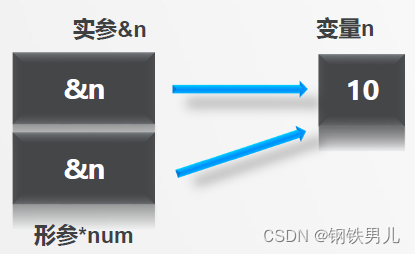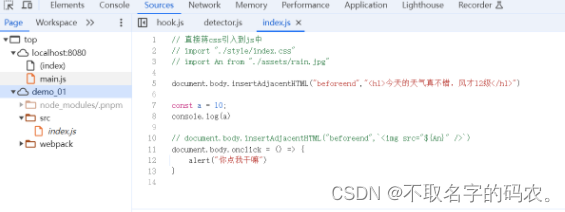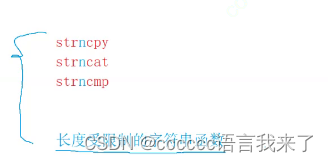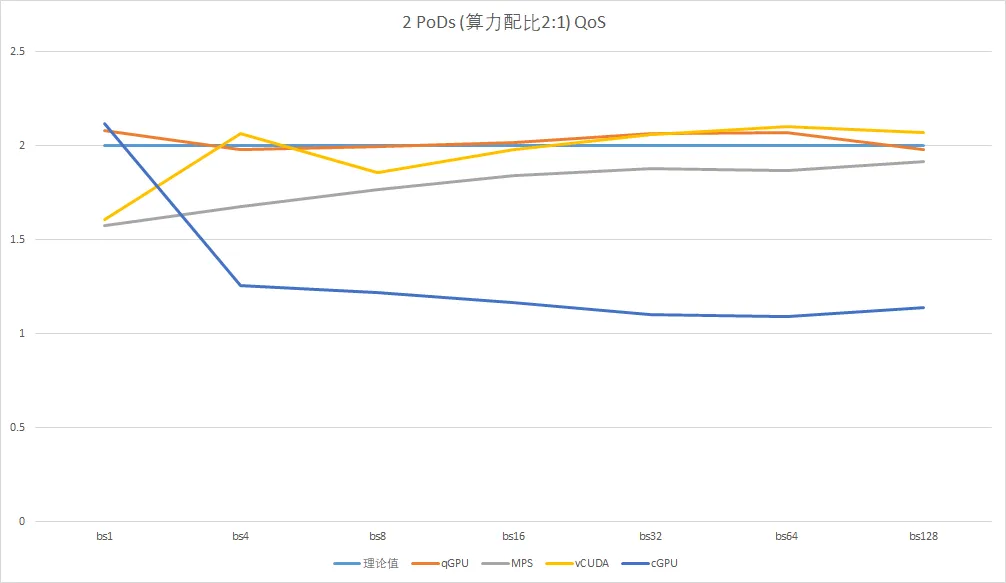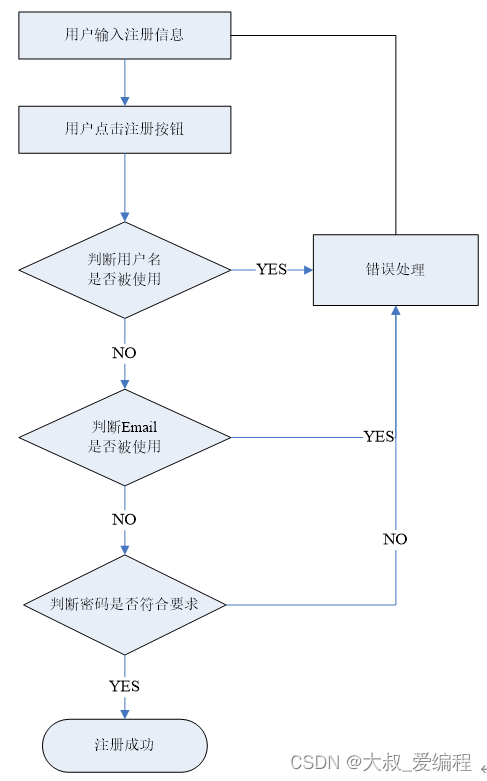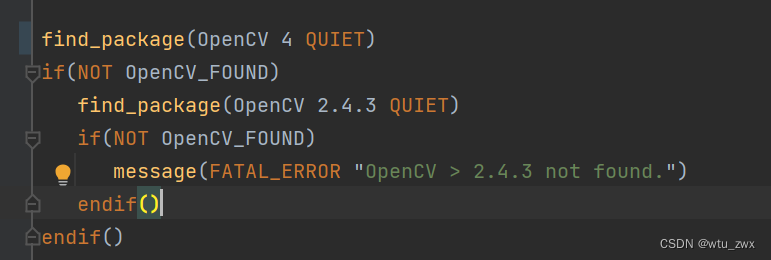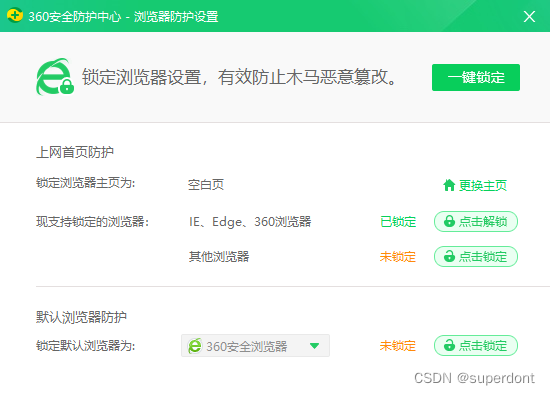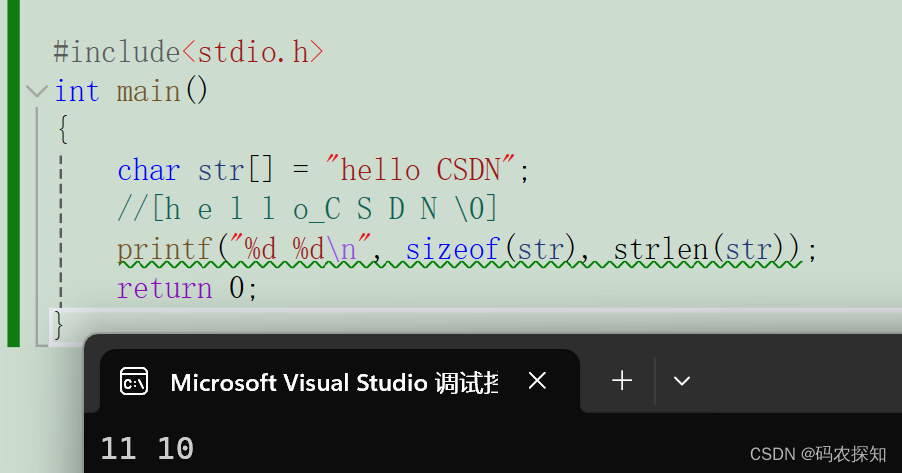Servlet(基础)
1、配置依赖:
在pom.xml文件中加入相关依赖
<dependencies>
<dependency>
<groupId>jakarta.servlet</groupId>
<artifactId>jakarta.servlet-api</artifactId>
<version>5.0.0</version>
<scope>provided</scope>
</dependency>
</dependencies>
2、Servlet的请求和返回的实现:
2.1、使用注解进行网页映射
Serlvet接口Sun公司有两个默认的实现类:HttpServlet,GenericServled,因此,在下面的代码中,通过使用HttpServlet来进行:
首先,编写一个类对HttpServlet进行继承,然后重写doGET和doPOST方法。
@WebServlet("/hello") //指定url的映射,类似于web.xml文件中注册url
public class FirstWeb extends HttpServlet {
@Override
protected void doGet(HttpServletRequest req, HttpServletResponse resp) throws ServletException, IOException {
PrintWriter out = resp.getWriter(); //获取一个响应流,然后通过这个对象中的write方法把内容响应给浏览器
out.write("GET");
}
@Override
protected void doPost(HttpServletRequest req, HttpServletResponse resp) throws ServletException, IOException {
PrintWriter out = resp.getWriter(); //获取一个响应流,然后通过这个对象中的write方法把内容响应给浏览器
out.write("POST");
}
}
2.2、通过web.xml注册的方式进行映射
<!--注册Servlet-->
<servlet>
<servlet-name>hello</servlet-name> <!--注册的映射的名字-->
<servlet-class>com.firstweb.demo01.FirstWeb</servlet-class> <!--指定映射的类-->
</servlet>
<!--Servlet的请求路径-->
<servlet-mapping>
<servlet-name>hello</servlet-name> <!--注册的映射的名字-->
<url-pattern>/hello</url-pattern> <!--注册的映射的url-->
</servlet-mapping>
3、ServletContext
web容器在启动的时候,它会为每个web程序都创建一个对应的ServletContext对象,它代表了当前的web应用;
3.1、共享数据:
首先,第一个类作为目标类,保存一个数据name到ServlertContext中:
@WebServlet("/hello")
public class FirstWeb extends HttpServlet {
@Override
protected void doGet(HttpServletRequest req, HttpServletResponse resp) throws ServletException, IOException {
PrintWriter out = resp.getWriter();
ServletContext context = this.getServletContext();
String name = "Bob";
context.setAttribute("name",name); //将一个数据保存在了ServletContext中,名字为:uname 。值 name
}
}
然后,第二个类作为测试类,写入如下代码,来获取ServletContext的内容:
@WebServlet("/context")
public class ContextTest extends HttpServlet {
@Override
protected void doGet(HttpServletRequest req, HttpServletResponse resp) throws ServletException, IOException {
ServletContext context = this.getServletContext();
String name = (String) context.getAttribute("name");
resp.setContentType("text/html");
resp.setCharacterEncoding("utf-8");
resp.getWriter().print("名字"+name);
}
}
随后,先访问目标类的url,使得第一个类被实例化成一个对象(在第一次访问类之前,第一个类没有进行实例化,所以如果直接访问第二个类的时候的结果name的值成了null),之后访问第二个类对应的url,可以看到输出结果出现了第一个类中的name的值。
3.2、获取初始化参数:
首先是设置一个初始化的参数,在web.xml文件中加入如下标签:
<!--配置一些web应用初始化参数-->
<context-param>
<param-name>url</param-name>
<param-value>jdbc:mysql://localhost:3306/mybatis</param-value>
</context-param>
然后如下代码,可以获得到初始化的参数。
@WebServlet("/context")
public class ContextTest extends HttpServlet {
@Override
protected void doGet(HttpServletRequest req, HttpServletResponse resp) throws ServletException, IOException {
ServletContext context = this.getServletContext();
String url = context.getInitParameter("url");
resp.setContentType("text/html");
resp.setCharacterEncoding("utf-8");
resp.getWriter().print("url="+url);
}
}
3.3、请求转发:
3.3.1、请求转发与重定向:
- 请求转发是服务器端跳转,它只产生一次请求,客户端请求到达服务器之后中会发生一次转发,之后服务器才将结果发送到客户端。
- 重定向是客户端跳转,它会产生两次请求,首先发一个response到浏览器,浏览器收到这个response后再发一个requeset到服务器,服务器接收后发新的response给浏览器。

3.3.2、相关代码:
@WebServlet("/context")
public class ContextTest extends HttpServlet {
@Override
protected void doGet(HttpServletRequest req, HttpServletResponse resp) throws ServletException, IOException {
ServletContext context = this.getServletContext();
System.out.println("进入了context");
//RequestDispatcher requestDispatcher = context.getRequestDispatcher("/hello"); //转发的请求路径
//requestDispatcher.forward(req,resp); //调用forward实现请求转发;
context.getRequestDispatcher("/hello").forward(req,resp);
}
}
对于context这个路径的类帮助请求了hello这个路径,然后hello这个路径的类把响应交给了context这个路径的类,最后响应给了浏览器。
3.4、读取资源文件
- 在java目录下新建properties
- 在resources目录下新建properties
发现:都被打包到了同一个路径下:classes,我们俗称这个路径为classpath:
思路:需要一个文件流
username=root12312
password=zxczxczxc
public class ServletDemo05 extends HttpServlet {
@Override
protected void doGet(HttpServletRequest req, HttpServletResponse resp) throws ServletException, IOException {
InputStream is = this.getServletContext().getResourceAsStream("/WEB-INF/classes/com/kuang/servlet/aa.properties");
Properties prop = new Properties();
prop.load(is);
String user = prop.getProperty("username");
String pwd = prop.getProperty("password");
resp.getWriter().print(user+":"+pwd);
}
@Override
protected void doPost(HttpServletRequest req, HttpServletResponse resp) throws ServletException, IOException {
doGet(req, resp);
}
}
4、HttpServletResponse:
web服务器接收到客户端的http请求,针对这个请求,分别创建一个代表请求的HttpServletRequest对象和一个代表响应的HttpServletResponse对象;
- 如果要获取客户端请求过来的参数:找HttpServletRequest
- 如果要给客户端响应一些信息:找HttpServletResponse4
4.1、简单分类:
负责向浏览器发送数据的方法:
ServletOutputStream getOutputStream() throws IOException;
PrintWriter getWriter() throws IOException;
负责向浏览器发送响应头的方法:
void setCharacterEncoding(String var1);
void setContentLength(int var1);
void setContentLengthLong(long var1);
void setContentType(String var1);
void setDateHeader(String var1,long var2);
void addDateHeader(String var1,long var2);
void setHeader(String var1,String var2);
void addHeader(String var1,String var2);
void setIntHeader(String var1,int var2);
void addIntHeader(String var1,int var2);
...
响应的状态码:
int SC_CONTINUE = 100;
int SC_SWITCHING_PROTOCOLS = 101;
int SC_OK = 200;
int SC_CREATED = 201;
int SC_ACCEPTED = 202;
int SC_NON_AUTHORITATIVE_INFORMATION = 203;
int SC_NO_CONTENT = 204;
int SC_RESET_CONTENT = 205;
int SC_PARTIAL_CONTENT = 206;
int SC_MULTIPLE_CHOICES = 300;
int SC_MOVED_PERMANENTLY = 301;
int SC_MOVED_TEMPORARILY = 302;
int SC_FOUND = 302;
int SC_SEE_OTHER = 303;
int SC_NOT_MODIFIED = 304;
int SC_USE_PROXY = 305;
int SC_TEMPORARY_REDIRECT = 307;
int SC_BAD_REQUEST = 400;
int SC_UNAUTHORIZED = 401;
int SC_PAYMENT_REQUIRED = 402;
int SC_FORBIDDEN = 403;
int SC_NOT_FOUND = 404;
int SC_METHOD_NOT_ALLOWED = 405;
int SC_NOT_ACCEPTABLE = 406;
int SC_PROXY_AUTHENTICATION_REQUIRED = 407;
int SC_REQUEST_TIMEOUT = 408;
int SC_CONFLICT = 409;
int SC_GONE = 410;
int SC_LENGTH_REQUIRED = 411;
int SC_PRECONDITION_FAILED = 412;
int SC_REQUEST_ENTITY_TOO_LARGE = 413;
int SC_REQUEST_URI_TOO_LONG = 414;
int SC_UNSUPPORTED_MEDIA_TYPE = 415;
int SC_REQUESTED_RANGE_NOT_SATISFIABLE = 416;
int SC_EXPECTATION_FAILED = 417;
int SC_INTERNAL_SERVER_ERROR = 500;
int SC_NOT_IMPLEMENTED = 501;
int SC_BAD_GATEWAY = 502;
int SC_SERVICE_UNAVAILABLE = 503;
int SC_GATEWAY_TIMEOUT = 504;
int SC_HTTP_VERSION_NOT_SUPPORTED = 505;
4.2、下载文件:
- 向浏览器输出消息 (前面一直在讲,就不说了)
- 下载文件
- 要获取下载文件的路径。
- 下载的文件名是啥?
- 想办法设置让浏览器能够支持下载我们需要的东西。
- 获取下载文件的输入流。
- 创建缓冲区。
- 获取OutputStream对象。
- 将FileOutputStream流写入到buffer缓冲区。
- 使用OutputStream将缓冲区中的数据输出到客户端!
- 创建一个新的Maven项目:response
- 创建结构目录
- 改变web.xml的代码为最新版
- 创建包com.yang.servlet
@Override
protected void doGet(HttpServletRequest req, HttpServletResponse resp) throws ServletException, IOException {
//1.获取下载文件的路径
String realPath = "C:\\Users\\20820\\Downloads\\bg.jpg";
System.out.println("下载文件的路径: " + realPath);
//2.下载的文件名
String fileName = realPath.substring(realPath.lastIndexOf("\\")+1);
//3.设置浏览器支持(Content-Disposition)下载我们要的东西,。中文名称URLEncoder.encode编码,否则可能乱码
resp.setHeader("Content-Disposition","attachment;filename="+ URLEncoder.encode(fileName,"UTF-8"));
//4,获取下载文件的输入流
FileInputStream in = new FileInputStream(realPath);
//5 创 建缓冲区
int len = 0;
byte[] buffer = new byte[1024];
//6.获取OutputStream对象
ServletOutputStream out = resp.getOutputStream();
// 7 将FileInputStream写入到buffer,使用OutputStream将缓冲区的数据输出到客户端
while ((len = in.read(buffer)) >0) {
out.write(buffer,0,len);
}
in.close();
out.close();
}
4.3、验证码功能:
生成验证码的两种方式:
- 前端实现
- 后端实现,需要用到java的图片类,生成一个图片
新建一个类ImageServlet进行测试验证码图片
@Override
protected void doGet(HttpServletRequest req, HttpServletResponse resp) throws ServletException, IOException {
//如何让浏览器每3秒自动刷新一次
resp.setHeader("refresh","3");
//在内存中创建一个图片 宽:80,高:20
BufferedImage Image = new BufferedImage(80, 20, BufferedImage.TYPE_INT_RGB);
//得到图片,创建画笔
Graphics2D graphics =(Graphics2D) Image.getGraphics();
//设置图片的背景颜色 从(0,0) 到(80,20)
graphics.setColor(Color.WHITE);
graphics.fillRect(0,0,80,20); //填充颜色
//给图片中写入数据
graphics.setColor(Color.black);
graphics.setFont(new Font(null,Font.BOLD,20));
graphics.drawString(makeNum(),0,20); //画一个字符串
//告诉浏览器以图片的方式打开
resp.setContentType("image/jpeg");
//浏览器中有缓存,不让浏览器缓存
resp.setDateHeader("expires",-1); //-1:表示不缓存
resp.setHeader("Cache-Control","no-cache");
resp.setHeader("Pragma","no-cache");
//把图片写给浏览器
ImageIO.write(Image, "jpg", resp.getOutputStream());
}
//生成随机数
private String makeNum(){
Random random = new Random();
String num = random.nextInt(9999999)+""; //字符串
//创建对象,填充数字不足的位置为0 ,stringBuffer:可变字符串
StringBuffer stringBuffer = new StringBuffer();
for (int i = 0; i < 7-num.length(); i++) {
stringBuffer.append("0");
}
num = stringBuffer.toString()+num;
return num;
}
4.4、实现重定向:
一个web资源(B)收到客户端(A)请求后,他(B)会通知客户端(A)去访问另外一个web资源©,这个过程叫做重定向。
常见场景:
- 用户登录
void sendRedirect(String var1) throws IOException;
@Override
protected void doGet(HttpServletRequest req, HttpServletResponse resp) throws ServletException, IOException {
resp.sendRedirect("/demo01_war/image"); //重定向
/*
* resp.sendRedirect("/response/image");可以拆分为:
* resp.setHeader("Location","/response/image");
* resp.setStatus(302);
* */
}
4.5、测试登陆用户重定向:
- 新建一个类RedirectTest类
- 在web.xml中进行RedirectTest类Servlet的注册
- 在页面index.jsp中进行html代码编写
- 新建一个页面success.jsp
新建一个用来处理重定向的类
@Override
protected void doGet(HttpServletRequest req, HttpServletResponse resp) throws ServletException, IOException {
//处理请求
String username = req.getParameter("username");
String password = req.getParameter("password");
System.out.println(username+":"+password);
//重定向,一定要注意路径问题,否则404
resp.sendRedirect("/demo01_war/success.jsp");
}
修改index.jsp文件:
<html>
<body>
<h2>Hello World!</h2>
<%--这里提交的路径,需要寻找到项目的路径--%>
<%-- ${pageContext.request.contextPath}:代表当前的项目 --%>
<form action="${pageContext.request.contextPath}/login" method="get">
用户名:<input type="text" name="username"> <br>
密码:<input type="password" name="password"> <br>
<input type="submit">
</form>
</body>
</html>
导入jsp的包:
<dependency>
<groupId>javax.servlet.jsp</groupId>
<artifactId>javax.servlet.jsp-api</artifactId>
<version>2.3.1</version>
</dependency>
success.jsp:
<%@ page contentType="text/html;charset=UTF-8" language="java" %>
<html>
<head>
<title>Title</title>
</head>
<body>
<h1>Success</h1>
</body>
</html>
5、HttpServletRequest:
HttpServletRequest代表客户端的请求,用户通过Http协议访问服务器,HTTP请求中的所有信息会被封装到HttpServletRequest,通过这个HttpServletRequest的方法,获得客户端的所有信息。
获取前端传递的参数 请求转发
获取参数方法:
- getParameter(String s)
- getParameterMap() 很少用
- getParameterNames() 很少用
- getParameterValues(String s)
包内新建一个类LoginServlet:
@Override
protected void doGet(HttpServletRequest req, HttpServletResponse resp) throws ServletException, IOException {
//解决乱码问题
req.setCharacterEncoding("utf-8");
resp.setCharacterEncoding("utf-8");
//接收处理参数
String username = req.getParameter("username");
String password = req.getParameter("password");
String[] hobbies = req.getParameterValues("hobbies");
System.out.println("======================");
System.out.println(username);
System.out.println(password);
//输出数组:Arrays.toString(hobbies)
System.out.println(Arrays.toString(hobbies));
System.out.println("======================");
//输出对应项目的路径
System.out.println(req.getContextPath());
//通过请求转发
//这里的 / 代表当前web应用
req.getRequestDispatcher("/success.jsp").forward(req,resp);
}
在index.jsp中编写代码
<%@ page contentType="text/html;charset=UTF-8" language="java" %>
<html>
<head>
<title>index</title>
</head>
<body>
<h1>登陆</h1>
<div style="text-align: center">
<%-- 这里表单提交的方式:以post方式提交表单,提交到login页面--%>
<form action="${pageContext.request.contextPath}/log" method="get">
用户名:<input type="text" name="username"><br>
密码:<input type="password" name="password"><br>
爱好:<input type="checkbox" name="hobbies" value="学习">学习
<input type="checkbox" name="hobbies" value="旅游">旅游
<input type="checkbox" name="hobbies" value="听歌">听歌
<input type="checkbox" name="hobbies" value="打羽毛球">打羽毛球
<input type="checkbox" name="hobbies" value="打网球">打网球
<br>
<input type="submit">
</form>
</div>
</body>
</html>
新建一个success.jsp页面
<%@ page contentType="text/html;charset=UTF-8" language="java" %>
<html>
<head>
<title>Title</title>
</head>
<body>
<h1>Success</h1>
</body>
</html>
name=“hobbies” value=“学习”>学习
旅游
听歌
打羽毛球
打网球
新建一个success.jsp页面
```jsp
<%@ page contentType="text/html;charset=UTF-8" language="java" %>
<html>
<head>
<title>Title</title>
</head>
<body>
<h1>Success</h1>
</body>
</html>


